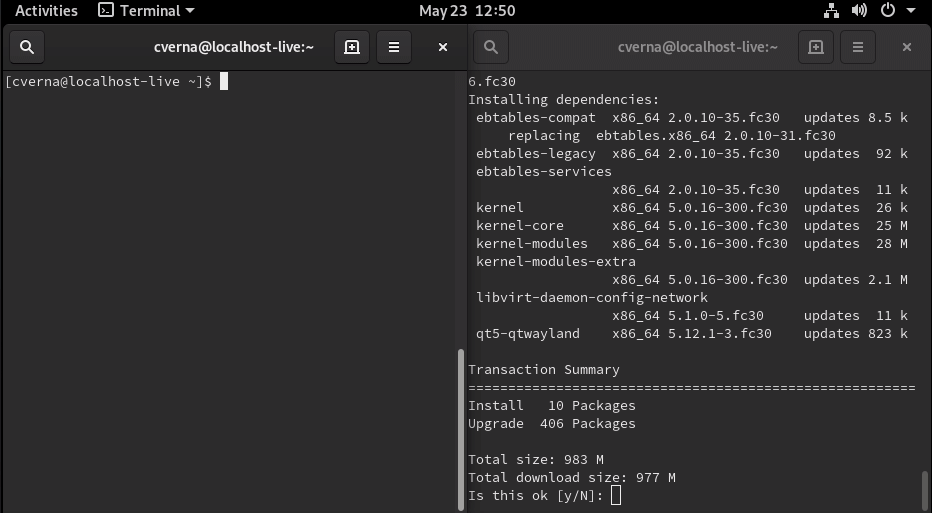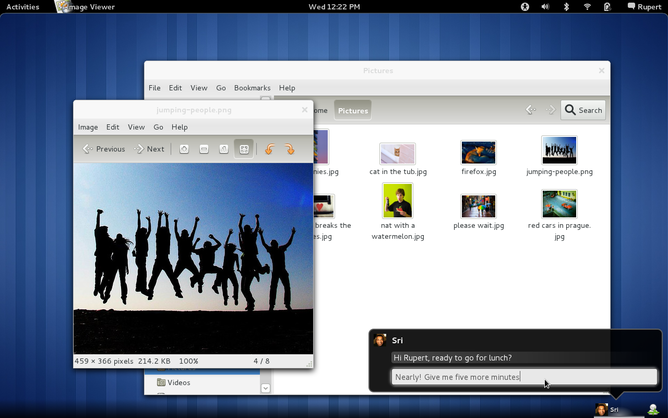

- Creating shortcat in gnome how to#
- Creating shortcat in gnome pdf#
- Creating shortcat in gnome .exe#
- Creating shortcat in gnome install#
- Creating shortcat in gnome portable#
Then, use the CD command to move the terminal window into the applications directory on your Linux PC.
Creating shortcat in gnome how to#
How to add desktop shortcut icons in GNOME Solution Verified - Updated T00:17:29+00:00 - English.


Simple to run i.e download,make it executable and run.since it is not installed no system libraries are altered.Compatibility with most linux distributions.
Creating shortcat in gnome portable#
What is an appimage application and what are its benefitsįor starters,there are many ways an application can be installed in a linux system i.e deb packages,snaps,flatpaks and appimages.Our focus today is appimages.Īn Appimage application is a single portable and executable software that can be run on linux without installation. For me Īs you see, it’s so easy to create an icon in Debian and Debian based distributions.I am going demonstrate how you can add an appimage application shortcut to linux desktop system's application menu and also how to customize its icon.But first lets get to understand what an appimage software is. If you want to create an icon which can be visible for just one user or special users, you create something in /home/ directories.Īfter creating the file, you can use the same content above. To disable a shortcut, edit it and press the Backspace. Once you have entered your new shortcut, it will automatically be saved and you should see it in the list next to the corresponding action. Mnemonic key combinations, such as Alt + F will not work.

By the way, “exec” line is so important, be sure that your exec command is working. The keys that you can use include Alt, Alt Gr, Ctrl, Shift, Super, number and letter keys. desktop file, edit this file like below and save it:Īfter saving, try to search this application from start menu. If you want to create an icon which can be visible from every user, you use this method.Īfter you create the. We have the shortcut icon when we complete the installation using a package manager, but if we choose the other methods, we have to do additional steps to create the shortcut icon and I realized that we have two methods to create icons. A window for entering the details appears: Fill in details for the application. Choose the Keyboard Shortcuts entry from the list and scroll down to the bottom of the list of keyboard shortcuts: Click the + button at the bottom of the list.
Creating shortcat in gnome pdf#
scripting PDF documents and GNOME Shell extensions written in JavaScript. Open Settings and choose the Devices entry from the list: Earlier Fedora versions might not need this step.
Creating shortcat in gnome install#
So when we want to install something, we use package manager in general, or an installation script or download binary files to run directly. JavaScript often abbreviated JS, is a programming language that is one of the core.
Creating shortcat in gnome .exe#
exe file or Program Files or installation file (.msi) etc. Maybe you know, in Linux systems we don’t have any. 'Terminal' and as command 'gnome-terminal' click on 'Set Shortcut.' and choose your shortcut e.g. Developing something on Linux is easier than Windows because we have terminals and root privileges, especially for Python. This is how to do it on a Gnome desktop: open Settings (which I called preferences) go to Devices -> Keyboard scroll down and click on '+' enter some random name e.g. And I prefer to use Debian with GNOME desktop because I got used to it before. Right-click it and select Add to favorites to add it to your Ubuntu dock. Its icon will appear in the search results. Hello again! Nowadays, I’m returning to dual boot system to move my development environment to Linux OS. Press the Super key (between the Control and Alt keys on the bottom-left of most keyboards) and type the first part of your application’s name.


 0 kommentar(er)
0 kommentar(er)
